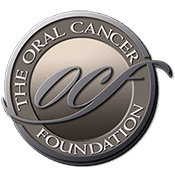Surveillance of ctDNA in HPV-positive head and neck cancers may predict recurrence
Source: www.targetedonc.com Author: Nichole Tucker The detection of circulating tumor DNA (ctDNA) in human papillomavirus (HPV) with an experimental blood test has been associated with high positive predictive value (PPV) and negative predictive value (NPV) for identifying disease recurrence in HPV-positive oropharyngeal cancer, according to a press release from the University of North Carolina (UNC) Lineberger Comprehensive Cancer Center.1 “The major utility of this test is it’s going to improve our ability to monitor patients after they complete treatment,” said Bhisham Chera, MD, associate professor in the UNC School of Medicine Department of Radiation Oncology. “Currently, our methods to assess whether the cancer has recurred are invasive, expensive and not always accurate.” In a prospective biomarker clinical trial published in the Journal of Clinical Oncology, investigators obtained 1006 blood samples for their analysis, 999 of which were evaluable for plasma circulating tumor human papillomavirus DNA (ctHPVDNA). The goal was to determine if surveillance of ctHPVDNA can facilitate earlier detection of recurrence compared with normal clinical follow-up.2 Patients were followed for a median of 23.7 months (range, 6.1-54.7 months), and out of 115 patients, 13% developed disease recurrence (n = 15). Of these recurrences, 1 was local only, 1 was regional only, 10 were distant only, 1 was local and distant, and the remaining 2 were regional and distant. Following treatment, 87 patients had undetectable ctHPVDNA, and none developed recurrence (95% CI, 96%-100%). The development of a positive ctHPVDNA occurred in 28 patients during post-treatment surveillance. The median time to abnormal [...]
